Recent Articles
Popular Makes
Body Types
2019 Chevrolet Cruze vs. 2019 Toyota Corolla: Which Is Best?
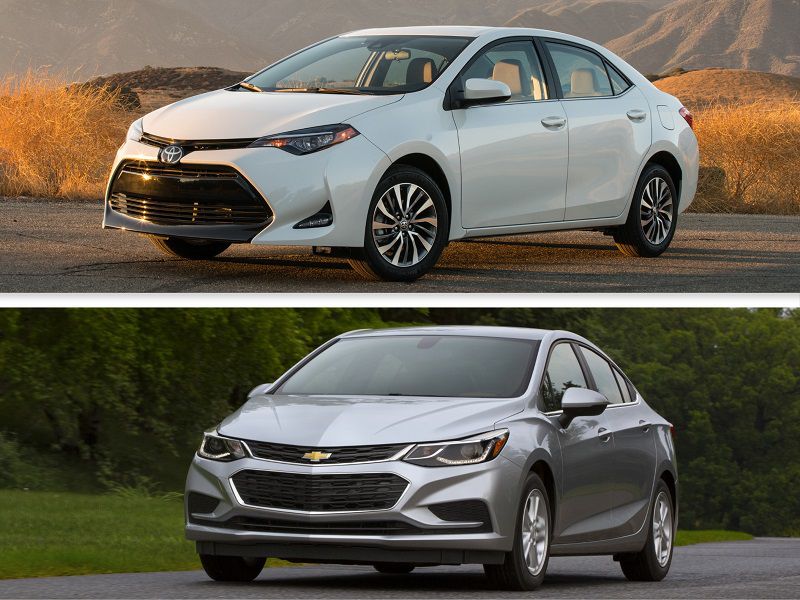
2019 Toyota Corolla Chevrolet Cruze Sedan ・ Photo by Toyota / Chevrolet
Toyota has just unveiled an all-new version of its highly popular Corolla compact sedan, a vehicle that promises to be sportier, more luxurious, and more high-tech than today’s model. But while this upcoming 2020 Corolla is drawing headlines, what about the 2019 Toyota Corolla sedan that’s on sale today? Can it keep up with the newly updated 2019 Chevrolet Cruze?
As you compare the Corolla and Cruze sedans, you’ll find some areas where each model was designed for different tastes — and others where one of the two is simply superior. (There are also Cruze and Corolla hatchbacks, but the 2019 Corolla hatch is related to the upcoming 2020 sedan rather than today’s model; it has its own unique pros and cons. We’re focusing today on the more popular four-door sedans.) We’ll break down the details and crown an overall winner.
Pricing
Let’s start with a key factor to an economy sedan: what it costs. The 2019 Corolla starts at $18,700, versus $17,995 for the Cruze. But when you look at the features you get for your money, the Corolla quickly retakes the lead.
You see, Chevrolet withholds several desirable features from its entry-level models. For example, the base L and next-up LS don’t offer cruise control, forcing an upgrade to the LT ($21,720). A forward-collision warning and automatic emergency braking, meanwhile, aren’t available until you get to the top Premier trim ($24,310 so equipped). These features, and more, come standard on every Corolla. Toyota also provides two years or 25,000 miles of free scheduled maintenance.
Toyota Corolla
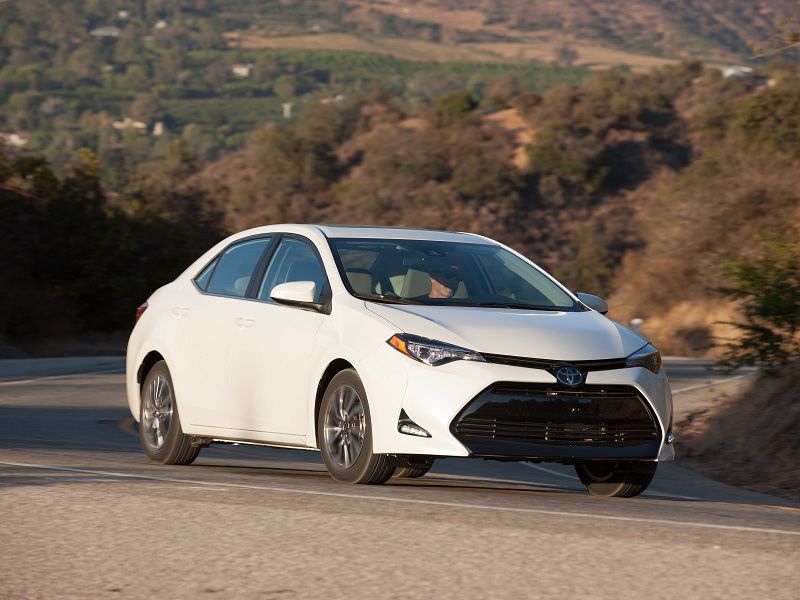
Photo by Toyota
Fuel Economy
While the Corolla may be less expensive to buy than the Cruze, Chevy buyers win back some savings at the pump. The Cruze with its standard powertrain has EPA ratings of 28 miles per gallon in the city, 38 mpg on the highway, and 32 mpg combined. Most Corolla trims are rated at 28 mpg city, 36 mpg highway, and 32 mpg combined, while the sport-themed SE and XSE manage about 1 mpg less. A manual transmission, not offered on the Cruze, drops the Corolla’s combined rating to 30 mpg.
Both the Cruze and Corolla offer extra-efficient variants. The Corolla LE Eco trim has a revised engine and some other tweaks that yield an EPA rating of up to 34 mpg combined. The Cruze can provide a more dramatic improvement: a pricey yet effective diesel engine, which pulls off EPA ratings of 31 mpg in the city and a whopping 48 mpg on the highway, and 37 mpg combined.
Chevrolet Cruze
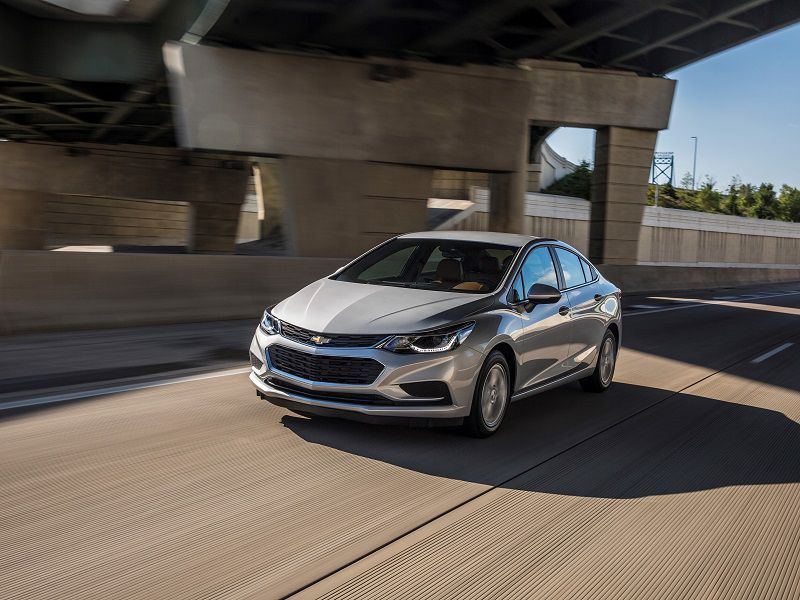
Photo by Chevrolet
Driving Experience
The Cruze is one of the best-driving compact sedans, at least for buyers who aren’t seeking thrilling performance. Its smooth, quiet ride makes the little Chevrolet feel like a bigger, more expensive car. Responsive, natural-feeling steering keeps the Cruze fun to drive, too, as long as you aren’t pushing it to its limits. The standard 153-horsepower four-cylinder engine and six-speed automatic transmission work well to deliver suitably peppy acceleration and avoid sounding strained.
The Corolla doesn’t share the Cruze’s quiet composure. Its 132-horsepower engine and continuously variable automatic transmission produce louder and more leisurely acceleration than the Cruze. It handles decently, but the steering lacks the Cruze’s effortlessly natural feel. And the Corolla’s sporty SE and XSE models even have a stiff ride. Drivers who want to shift their own gears will appreciate the Corolla’s available manual transmission, but the Cruze is otherwise the better driver’s car.
Chevrolet Cruze
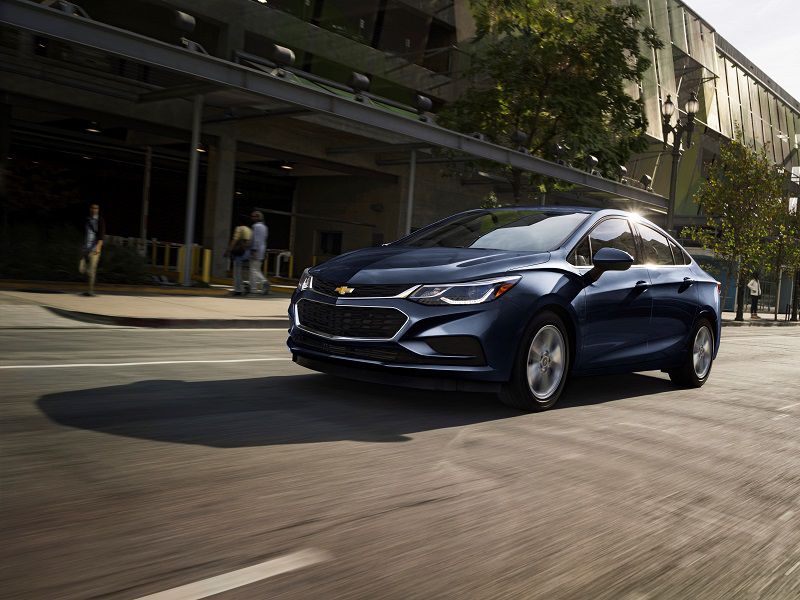
Photo by Chevrolet
Interior Space and Comfort
Both the Cruze and the Corolla sedans have comfortable front seats that exceed the economy-car norm. Of the two, the Corolla’s are thicker and more generously padded, while the Cruze’s are firmer and more form-fitting. While tastes may vary between these two approaches, the Toyota’s rear seat is a more obvious winner. It’s higher off the floor than the Chevy’s and offers more legroom. If you need to carry adults in the back, the Corolla is the superior option.
The Cruze does have the larger trunk, ranging from 13.9 to 14.8 cubic feet depending on trim level. The Corolla has 13.0 cubic feet across the lineup. For extra cargo space, consider the five-door hatchback versions of the Cruze and Corolla — just remember that the Corolla hatchback is mechanically unrelated to the 2019 Corolla sedan. Between the sedans, we find the Corolla’s roomier cabin more valuable than the Cruze’s bigger trunk.
Toyota Corolla
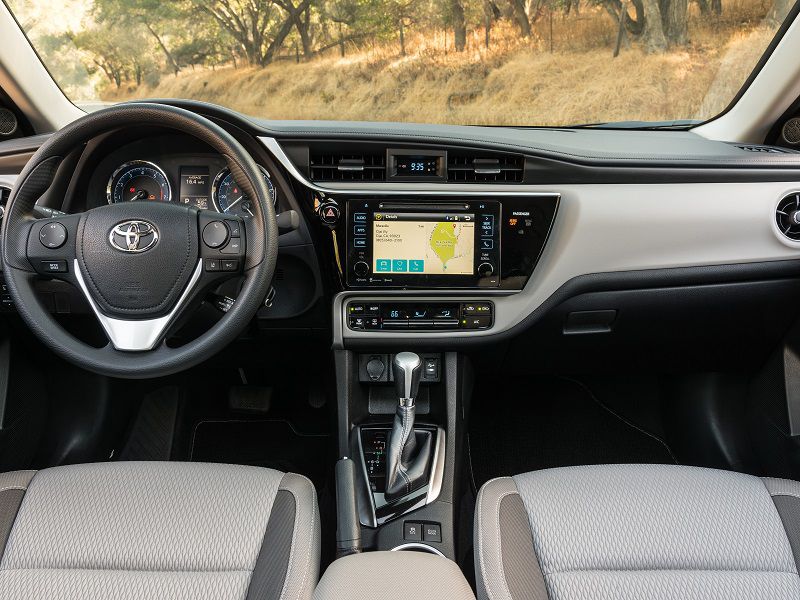
Photo by Toyota
Exterior Styling
The Cruze and the Corolla take different approaches to their exterior styling, and we find both results to be attractive. The Cruze has a sleek, aerodynamic body that flows gracefully from its nose to its tail. Large headlights extend around the side of the car, and they meet at a newly updated grille.
The Corolla, meanwhile, has a chunkier, boxier shape that more clearly separates the “three boxes” of a traditional sedan: front end, passenger area, and trunk. Its smaller, less curvy headlights create a more aggressive face, and the Toyota wears less chrome than the Chevrolet. Each buyer will have their own preference between the two.
Tie
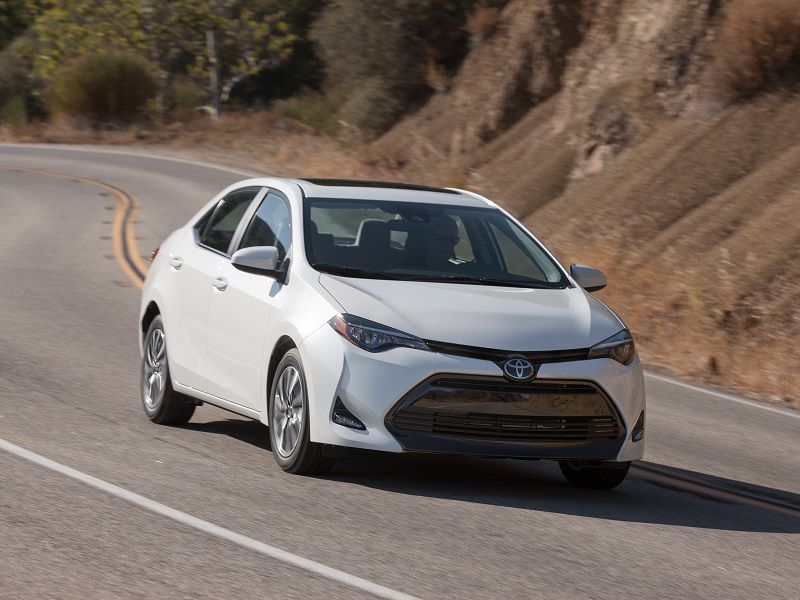
Photo by Toyota
Interior Styling and Ambiance
As with their exteriors, the Chevrolet Cruze’s cabin features gentle curves while the Toyota Corolla’s is more angular and upright. Here, though, we feel more comfortable declaring a winner. The Corolla’s taller dash looks dated, feels imposing, and reduces your forward visibility compared to the Cruze's. Many materials also look and feel downscale of the Chevrolet's.
The Cruze interior feels more solidly built and looks more contemporary. The dashboard slopes away from front seats, and Chevrolet’s designers use a mixture of shapes and textures to keep the dash from looking like a monolith. It won't be mistaken for a BMW, but the Cruze’s cabin is nicer than the Corolla’s.
Chevrolet Cruze
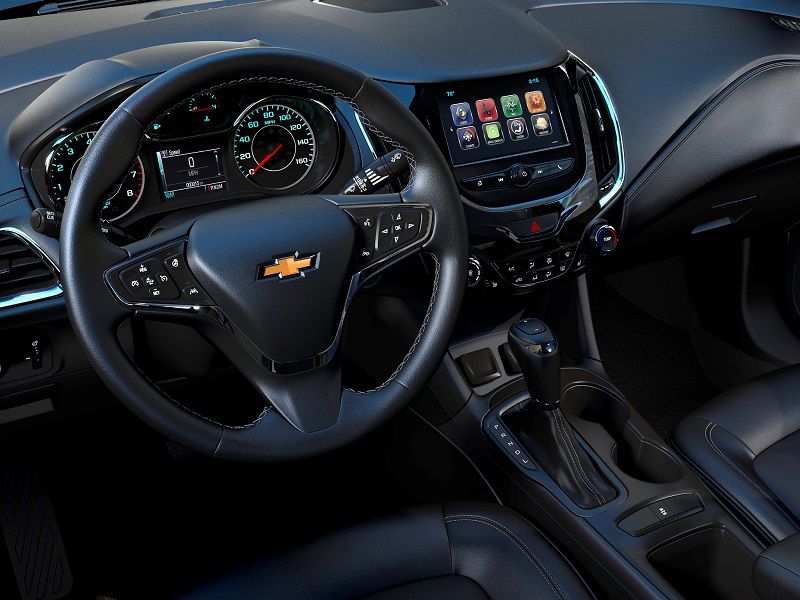
Photo by General Motors
Infotainment
The Chevrolet Cruze's interior doesn’t only look more contemporary than the Toyota Corolla's — it also brings superior infotainment technology. Last year’s Cruze was already impressive for its capability, crisp graphics, and user-friendly design, but 2019 brought further upgrades. Chevrolet calls its latest system “Infotainment 3,” and it features large, clear icons on a 7-inch touchscreen. You can also use swiping gestures like on a smartphone, and the system is compatible with Android Auto and Apple CarPlay. Two USB ports come standard.
The Corolla, meanwhile, comes standard with a smaller 6.1-inch touchscreen. A 7-inch touchscreen is available on most models (optional on the mid-level LE and SE, standard on the top XLE and XSE), but it trails the Cruze for graphical crispness and responsiveness to inputs. Furthermore, there’s no Android Auto or Apple CarPlay support, and there’s just one USB port.
Chevrolet Cruze
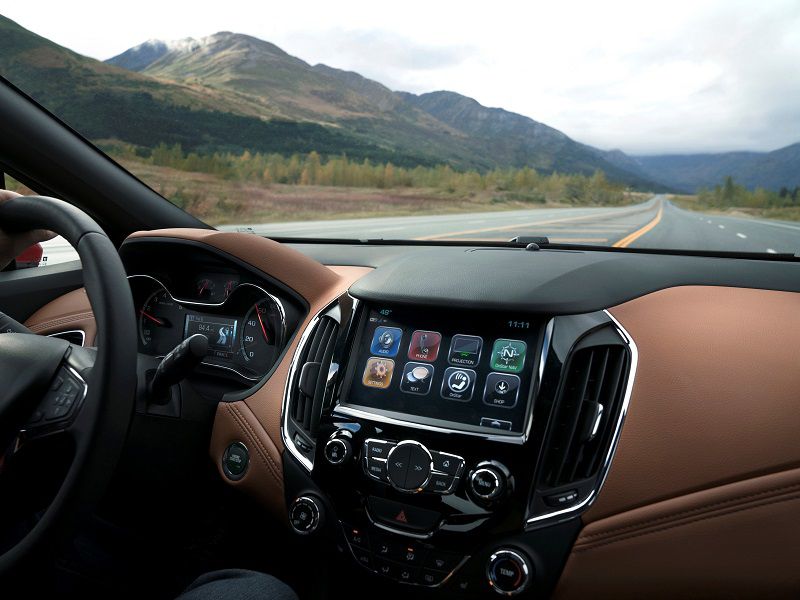
Photo by General Motors
Safety
The 2019 Toyota Corolla sedan may be in its final model year, but it’s a standout for both its crash protection and its crash-prevention technology. The Corolla won IIHS Top Safety Pick status based on Insurance Institute for Highway Safety crash tests, plus a top overall five-star rating from the National Highway Traffic Safety Administration. Even more impressively, the Corolla’s standard features include a forward collision warning, automatic emergency braking, radar cruise control, a lane-departure warning with automatic steering corrections, and automatic high beams.
The 2019 Chevrolet Cruze hasn’t been fully crash-tested, but the Corolla’s excellence leaves little room for the Chevy to beat it. What’s more, although the Cruze now offers the same advanced safety features as the Corolla, they’re extra-cost options that are available only on the top Premier trim. The Cruze does offer a useful blind-spot monitoring system that the Corolla lacks, but Toyota’s extensive standard features give it the win.
Toyota Corolla
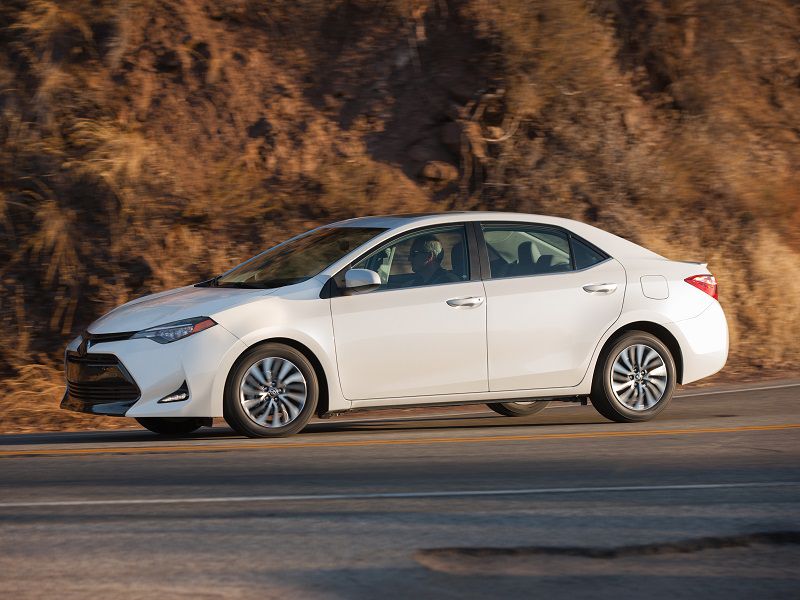
Photo by Toyota
Overall
To choose between the 2019 Toyota Corolla and 2019 Chevrolet Cruze, consider what you want from a compact sedan. Are you looking for simple, safe, affordable transportation? If so, that’s the Corolla’s domain. Or would you rather pay extra for a car drives better, feels more upscale, and provides superior infotainment? That would make you a Cruze customer instead (even if that may change with the new 2020 Corolla).
Overall, the Cruze is the car we’d rather drive, with its superior power, refinement, and overall driving dynamics. But given the Corolla’s extra features for the money — especially when it comes to valuable safety technology — and its extra interior room, we think its strengths are more central to the mission of an economy sedan.
Toyota Corolla
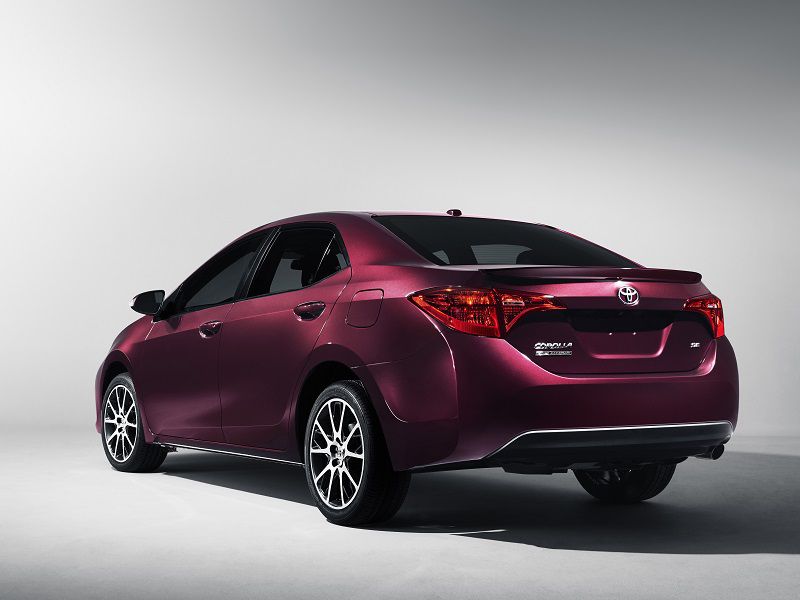
Photo by Toyota